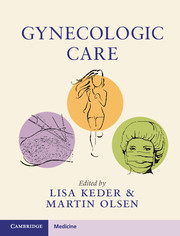Book contents
18 - Infertility-Related Surgeries
from Section 3 - Infertility
Published online by Cambridge University Press: 01 February 2018
Summary
Introduction
In vitro fertilization (IVF) is undeniably the most rapidly advancing and successful avenue for fertility treatment offered by reproductive endocrinologists. Strides in laboratory techniques, nuances in cycle induction protocols, and refinement of the transfer process have each contributed to a reproductive endocrinologist's (RE) reliance on IVF for the infertile couple. Historically, couples who might have been offered surgery to address tubal factor issues may find that those options are now not even raised. What is even more startling is that even with the major recent advances made in surgical equipment (e.g., laparoscopic magnification and optics, instrumentation, robotics), many couples are advised to pursue IVF in favor of a reparative infertility surgery.
A variety of contributing factors likely account for this decline in surgery. First, fellowship education has focused lately more on IVF training than surgery. As more experienced surgeons reduce their numbers of cases, the intraoperative learning by residents and fellows is necessarily reduced. A generation of residents and fellows therefore has graduated who may be less confident in their surgical skills; they thus defer to the more familiar IVF route. In fact, perusal of the 46 fellowship programs accredited in the United States for 2017 shows that the number of self-reported laparoscopy and laparotomy cases are dwarfed by the number of assisted reproductive cases offered by those institutions [1].
The second contributing factor is financial. Insurance reimbursement for surgical cases has declined and the attending surgeons may offer the more lucrative IVF procedure to meet their fixed office costs (i.e., laboratory and nursing personnel, office space) [2]. Finally, many couples may opt for IVF directly if their costs are out of pocket. IVF promises a greater and more immediate road to success compared to surgery, since if the surgery is unsuccessful, the couple must once again consider IVF.
Recent literature suggests that reproductive surgery is being viewed more as a means to facilitate the IVF that is sure to follow. It is clear that ovarian cysts, endometriomas, hydrosalpinges, and fibroids are all associated with reduced IVF pregnancy rates. But their removal is often inarguably directed to improve the IVF success.
- Type
- Chapter
- Information
- Gynecologic Care , pp. 175 - 183Publisher: Cambridge University PressPrint publication year: 2018
- 1
- Cited by

